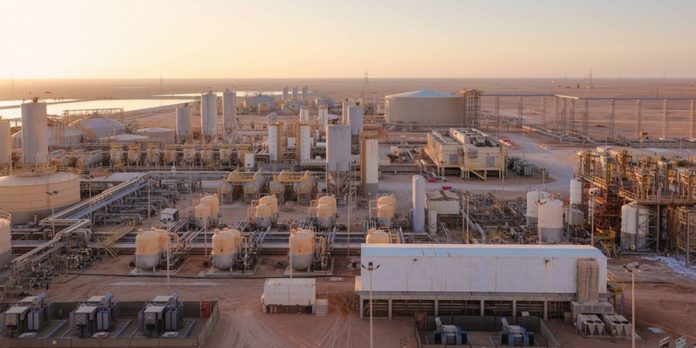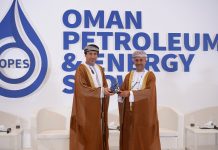The Sultanate of Oman’s production of crude oil and condensates during February 2023 stood at 29.7 million barrels, or a daily average of 1.06 million barrels, thus maintaining the same production rates compared to January 2023. The figure confirms Oman’s commitment with OPEC Plus to reduce production and narrow the gap between supply and demand.
The total quantities of crude oil exported in February 2023 stood at 23.67 million barrels, or a daily average of 845,000 barrels, constituting a growth of 0.6 percent compared to January 2023 when calculating the daily rate.
Dr. Saleh Ali Al Anbouri, Director General of Exploration and Production at the Ministry of Energy and Minerals, said that the average price of Oman oil futures in the DME increased by 1.6 percent in February 2023, compared to January 2023.

He pointed out that the average price of Omani oil for delivery next April 2023 stood at US$82.23 per barrel, an increase of US$1.31, compared to the price for delivery in March 2023, as the trading price ranged between US$78.31 per barrel and US$85.19 per barrel.
The increase is due to several reasons namely the continued recovery of demand for crude oil in China after lifting the restrictions imposed as a result of Covid-19, Russia’s announcement of plans to reduce production by 500,000 barrels per day, which reflects its inability to sell all of its oil and the disruption of crude oil flows from the Turkish port of Ceyhan due to the devastating earthquake.
Dr. Al Anbouri added that the average daily production of Oman’s natural gas in February 2023 stood at 140.5 million cubic meters. Oman’s exports of liquefied natural gas (LNG) during the same month stood at 999,300 metric tonnes (15 shipments) while Oman’s exports of natural gas liquids (NGLs) stood at 16,300 metric tonnes (3 shipments).
Oman’s average production of liquefied petroleum gas (LPG) in February 2023 stood at 2.754 metric tonnes, and the average daily exports during the same month stood at 1.115 metric tonnes. The figures are reassuring as they come against a backdrop of volatile hydrocarbon prices in the face of concerns regarding the banking sector in the USA and Europe.
The Director General of Exploration and Production at the Ministry of Energy and Minerals further said that the oil and gas sector has witnessed the completion of many projects since the beginning of 2023, represented in the ministry’s announcement of offering three oil and gas concession areas for local and international oil and gas companies.
The move comes as part of the ministry’s plan to promote concession areas offered for investment during 2023. These sites include the concession area (15) which is located in the north of the Sultanate of Oman in Governorate of A’Dhahirah, the concession area (36) on the south-eastern edge of the Empty Quarter Basin, and the concession area (54) in the eastern edge of the salt basin in the south of the Sultanate of Oman.
This offering comes in implementation of plans and programmes related to exploration of oil and gas to support the reserves of oil and gas in the Sultanate of Oman.
Dr. Al Anbouri affirmed that the start of natural gas and condensates production from Mabrouk field in Concession area (10) will enhance the natural gas reserves in the Sultanate of Oman. Mabrouk field production is expected to reach more than 0.5 billion cubic feet per day by mid-2024.
The opening of the Bisat oil field with a production capacity of 60,000 barrels per day, is expected to raise OQ Group’s share of the Sultanate of Oman’s total oil production to 220,000 barrels of oil equivalent per day, representing about 13 percent of the upstream contribution to the gross domestic product.
He added that the Rima water treatment plant was inaugurated at a cost of RO87mn on an area of 25 sq kms. It is the second project of Petroleum Development Oman (PDO) functioning as an environment friendly solution to dispose of water associated with oil production. The processing capacity of this station is about 375,000 barrels per day. This technology contributes to reducing energy consumption by 10 gigawatts and reducing gas emissions by 48,000 tonnes annually. The Ministry’s ongoing efforts to boost energy production is sure to stand Oman’s economy in good stead in future.






